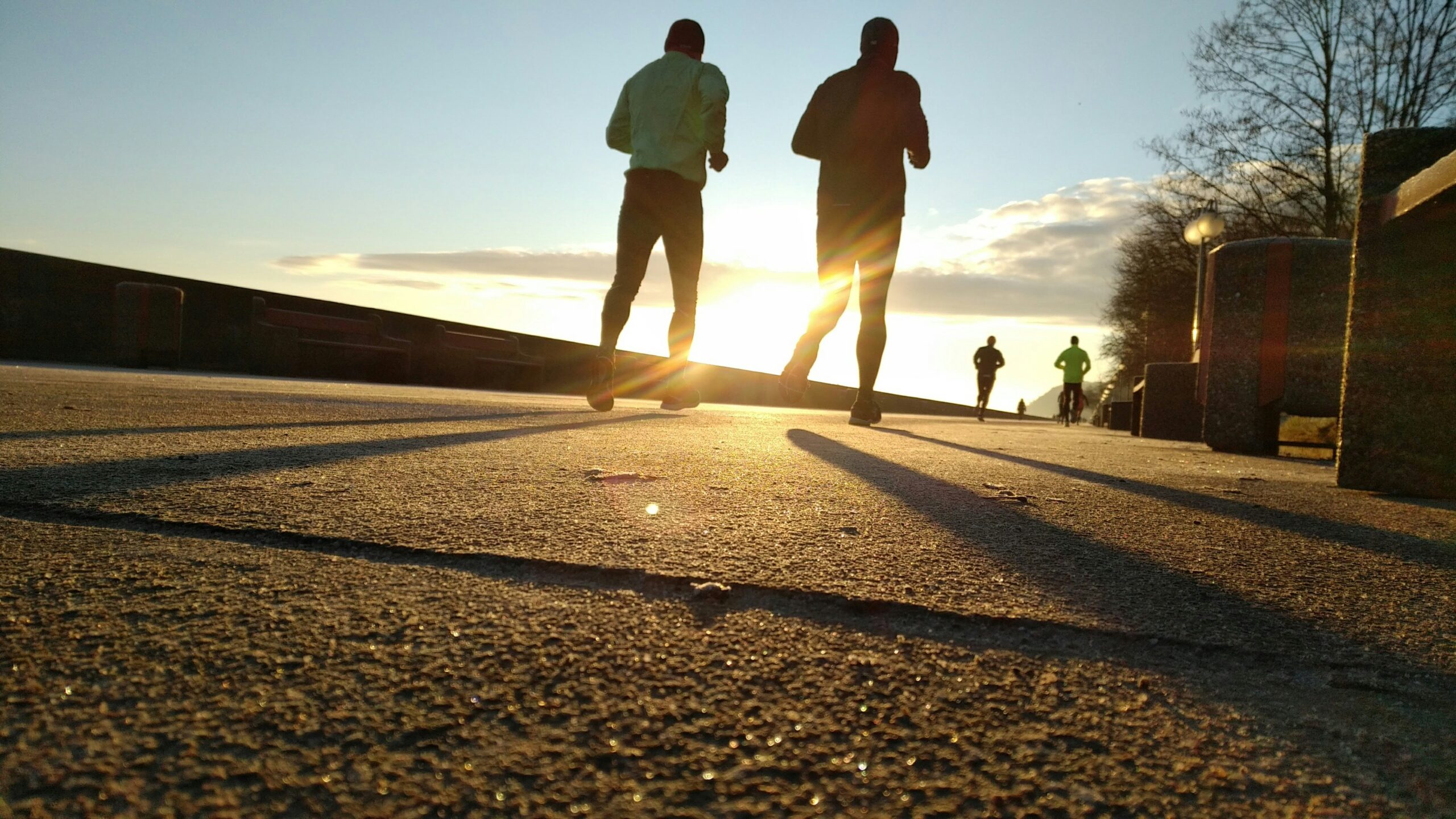Unpacking the Unconventional: A New Approach to Training
In the world of sports, where every second counts and every point matters, finding the edge that sets you apart can feel like searching for a needle in a haystack. Conventional wisdom has long dictated the methods of training, but what if we told you that some of the most effective techniques are those that fly under the radar? Let’s take a plunge into the unconventional—because sometimes, breaking the mold is exactly what you need to elevate your game.
The Power of Visualization
Visualization isn’t just for meditation or yoga enthusiasts. In fact, athletes across disciplines have harnessed this powerful technique to enhance performance. It’s all about mental rehearsal—picturing yourself performing at your peak. I remember watching a documentary on a renowned sprinter who would visualize his races in detail before stepping on the track. He could see the finish line, feel the adrenaline, and hear the crowd roar, all before the race even began. This isn’t purely psychological mumbo jumbo; studies suggest that visualization can lead to improved muscle memory and greater focus.
Incorporating Play into Your Routine
Who said training has to be serious? There’s something wonderfully liberating about incorporating play into your practice sessions. Games like dodgeball or tag can enhance agility, coordination, and even teamwork—skills that are essential in competitive sports. I once watched a football team engage in a massive game of capture the flag, which not only had them sprinting around but also strategizing on the fly. The laughter ringing out on the field was infectious, and it struck me that this approach could foster camaraderie while pushing physical limits.
Movement-Based Training: Dance Like No One’s Watching
Alright, hear me out. Dance isn’t just for the stage or the club; it’s a phenomenal training tool. Many professional athletes are now incorporating dance into their routines. Whether it’s ballet for balance or hip-hop for speed, these movements can improve agility and coordination. I once attended a workshop led by a former professional ballerina who instructed hockey players. You should have seen them trying to pirouette—definitely not their usual motion! But the improvement in their balance was nothing short of impressive.
Breath Control: The Hidden Art of Performance
Breath control might sound like something you’d expect to hear in a yoga class, but it actually plays a crucial role in athletic performance. Proper breathing techniques can enhance endurance, reduce fatigue, and even lower stress levels. I had a coach who emphasized the importance of breath during intense training sessions. He would often remind us that “breath is life,” and we’d practice deep, rhythmic breathing to help us get through those last grueling reps. There’s science behind it too! Research indicates that athletes who practice breath control during training can experience improved oxygen flow, leading to better overall performance.
Unleashing the Power of the Unconventional
Now, let’s dive into techniques that might raise a few eyebrows among traditionalists. These methods may seem quirky at first, but they have their merits.
Cold Water Immersion
It’s not just for polar bears and daredevils; cold water immersion has gained traction among serious athletes. The shock of cold water can stimulate circulation, reduce inflammation, and enhance recovery. I remember hearing a story about a swimmer who jumped into a freezing lake every morning before practice. While I’m not sure I’d be willing to take that plunge, it’s hard to ignore the recovery benefits that come with it. Just be cautious; some studies indicate that prolonged exposure can have adverse effects if not done correctly.
Training with Weighted Vests
Think of it as a superhero training regimen. Training with weighted vests can enhance strength and endurance—plus, it makes you feel like you’re preparing for a Marvel movie. Athletes from basketball players to long-distance runners are beginning to embrace this technique. It’s like adding a little extra weight to your workout without the need for bulky equipment. I once tried a session with a weighted vest, and although my legs were yelling at me by the end, I could feel the difference in my stamina during subsequent workouts.
The Science of Unorthodox Practices
As we dive deeper into this topic, it’s essential to explore the science behind these unconventional methods. Often, the best practices are backed by research that may not yet be mainstream. Let’s take a look at a few of these fascinating studies.
The Gyroscope Effect: Balance and Coordination
Gyroscopes are not just for aviation or space travel; they can also be applied to sports training. You might have seen specialized training devices that use gyroscopic principles to improve balance and coordination. Studies have shown that athletes who incorporate gyroscopic training into their routines often report enhanced core stability and agility. I’ve seen football players use these devices in training camps, and while they look a bit like they’re trying to balance on a spaceship, the results speak for themselves.
Neuroplasticity and Cross-Training
Here’s a term that can make anyone sound smart at a dinner party: neuroplasticity. This refers to the brain’s ability to reorganize itself by forming new neural connections. Cross-training can stimulate this effect, allowing athletes to develop new skills and techniques that enhance their primary sport. A friend of mine, a tennis player, took up rock climbing as a form of cross-training. It not only improved his upper body strength but also his focus, which translated directly to his performance on the court. It’s amazing how stepping outside your comfort zone can benefit your primary athletic pursuits.
Integrating Mindfulness into Training
Mindfulness isn’t just a buzzword; it’s a game-changer in the world of sports. The ability to stay present and focused can significantly impact performance. I once attended a workshop on mindfulness for athletes, and the trainer had us practice being aware of our breathing and body sensations during a workout. The results were eye-opening! Athletes reported feeling more in tune with their bodies, leading to better decision-making during competitions.
Yoga: More Than Just Stretching
For years, yoga was dismissed by many as an activity for the non-athletic. However, it’s been embraced by elite athletes who recognize its benefits. From improving flexibility to enhancing mental clarity, yoga is a multifaceted training tool. I remember watching a documentary on a professional basketball team that incorporated yoga sessions into their weekly routine. The players were skeptical at first, but they soon found that it not only helped with their physical recovery but also fostered a sense of calm before high-stakes games.
Community and Collaborative Training
Sometimes, the most unconventional training techniques come from the people around us. Community-based training can lead to unexpected results. Collaborating with others can push you beyond your perceived limits. I’ve witnessed amateur runners join forces for group runs, each encouraging the other to go that extra mile. It’s not just about competition; it’s about camaraderie. In fact, studies indicate that athletes who train in groups often report higher levels of motivation and improved performance.
Incorporating Technology
In today’s digital age, technology has infiltrated every aspect of our lives—including sports training. Wearable tech, apps, and virtual reality training programs are becoming increasingly popular. These tools can provide valuable insights into performance metrics, making it easier to track progress and identify areas for improvement. I once tried a virtual reality boxing game, and while I may not be ready to challenge any pros, it was a fun way to improve my reflexes and coordination.
Final Thoughts on Embracing the Unconventional
As we wrap up this exploration of unconventional training techniques, it’s important to remember that innovation often comes from stepping outside the box. Whether it’s incorporating dance, utilizing technology, or embracing the power of visualization, the key is to keep an open mind and be willing to experiment. The world of sports is ever-evolving, and those who adapt and embrace new methods will undoubtedly find themselves at the forefront of their game.
So, why not give some of these techniques a shot? You may just find that they elevate your performance to new heights. Be bold, be creative, and above all, enjoy the journey. After all, sports should be fun, right? (Even if you’re sweating buckets while doing it!)




